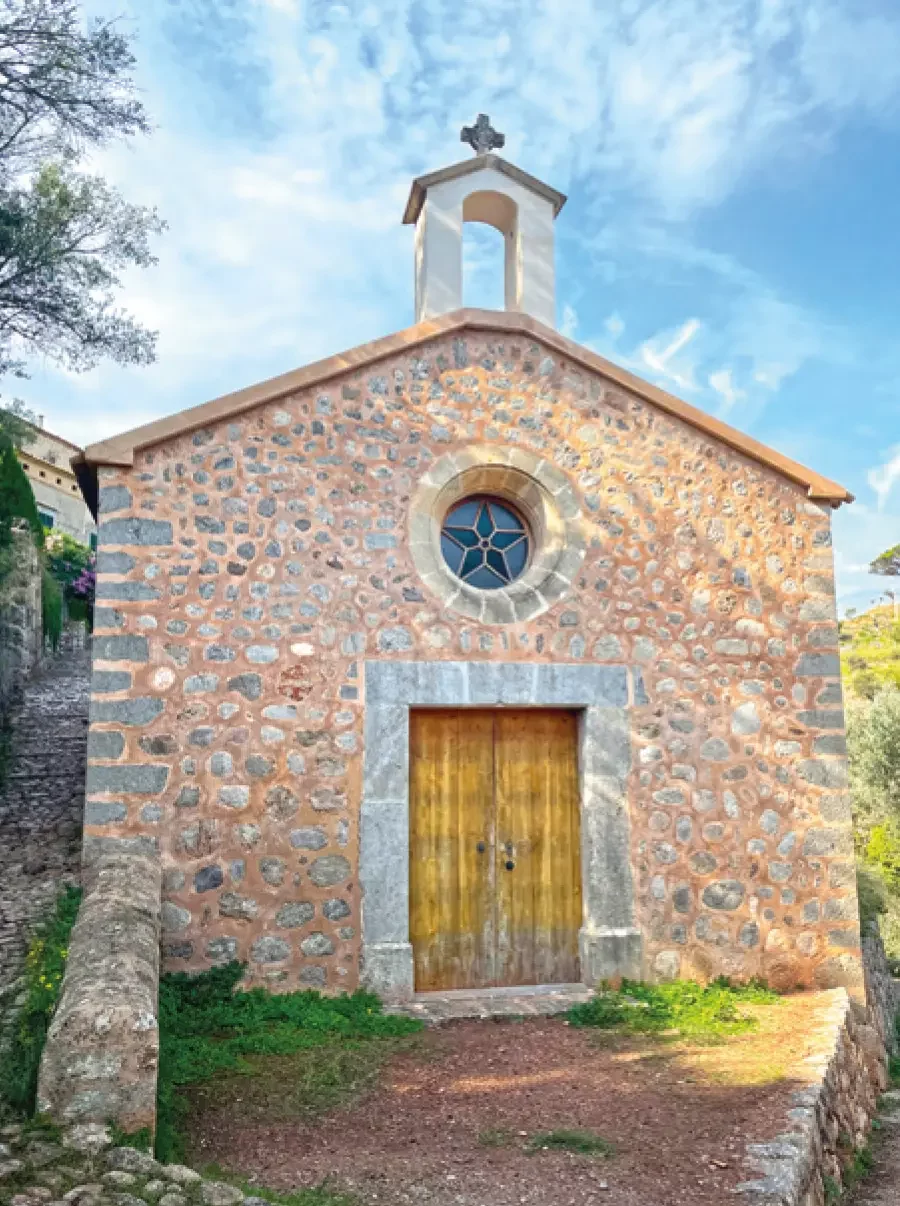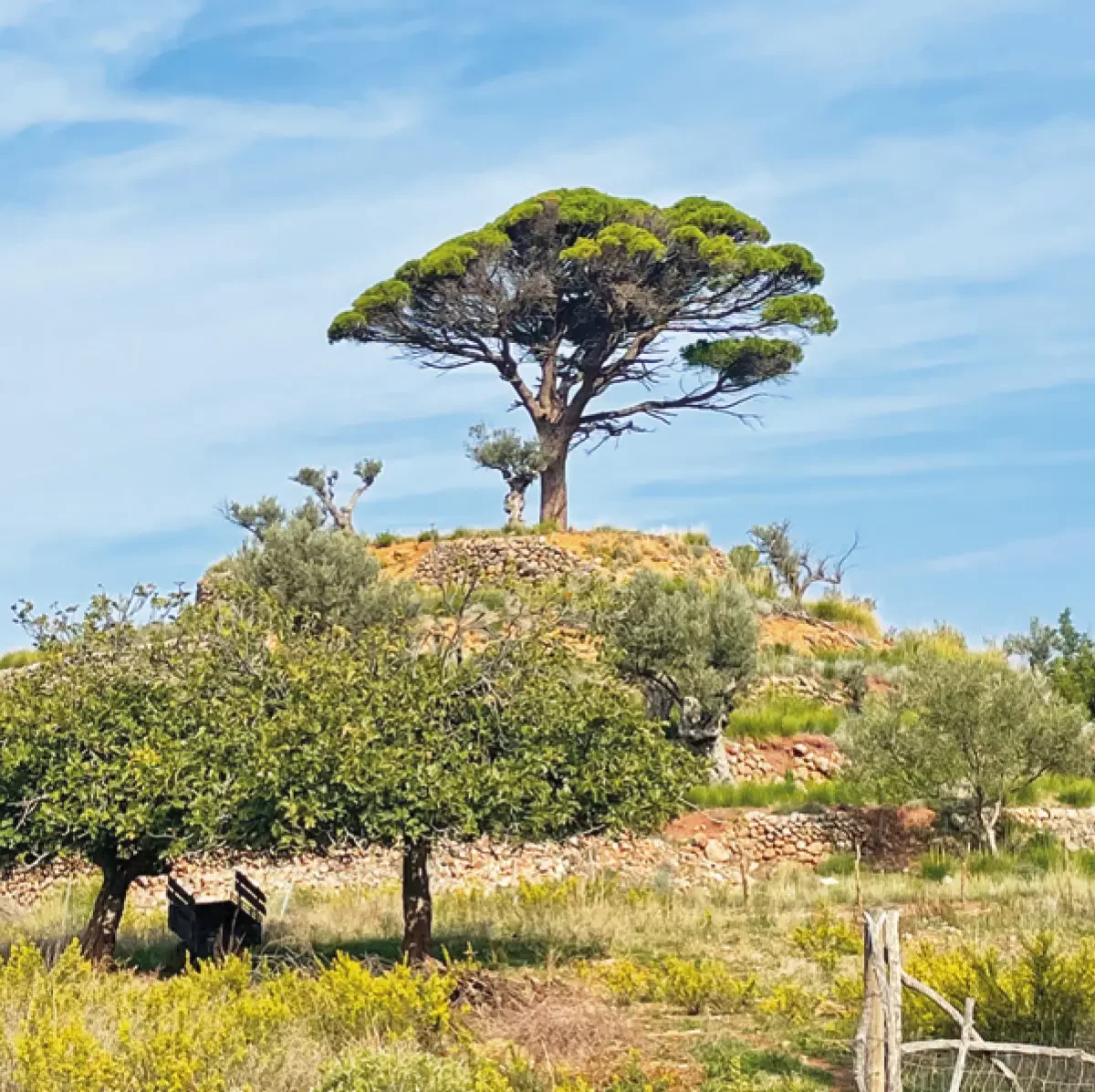Hiking in Sóller
Discover and enjoy the surroundings of Sóller
Discover the surroundings of Sóller on foot
Without a doubt, one of Sóller’s greatest attractions is its location in a valley, surrounded by the mountains of the Tramuntana Range—a UNESCO World Heritage Site. This makes it the perfect starting point for a variety of hiking routes and trails that allow you to experience and enjoy the natural beauty of the area.
Below, we present a selection of hikes, listed approximately from easiest to most challenging:
- Ses Tres Creus (2,4 km) – 1,5h
- Sa Capelleta (1,5 km) – 45’
- Del Port a Sóller per Son Sales i Es Rost (3 km) – 2,5h
- Torre Picada i camí de s’Illeta (1,5 km) – 45’
- Volta pobles de la vall (2 km) – 1h 15’
- Muleta (2 km) – 2h
- Camí Vell d’es Port (3 km) – 1h 45’
- Camí de Sa Figuera (2,5 Km) – 2,5h
- Camins empedrats de Montreials i Rocafort (7,9 km) – 3h 15’
- De Sóller a Fornalutx pel Mirador de Ses Barques (6 km) – 2h 45’
- Comuna de Fornalutx (6 km) – 2,5h
- Camí Vell de Bàlitx i Sa Costera (14 km) – 4,5h
- Barranc de Biniaraix (8 km) – 4h
- Portell de Sa Costa (6,5 km) – 4h 15’
Hikes with history
Camí de Rocafort, Camí de Castelló and camí de Son Sales.
Duration: 3 – 3.5 hours

PACK ANIMAL TRAIL (Camí de Herradura)
These trails were originally built to access mountain estates. They are usually cobbled and have a minimum width of 1.70 meters. Traditionally, they were used to transport surplus goods from the estates to the towns. Muleteers would travel these paths with their pack animals.
CART TRACK (Camí de Carreter or Pista)
These paths served the same purpose as the pack animal trails, but were wide enough for carts to pass—at least 2.40 meters wide. In some sections, older pack trails were widened to become cart tracks.
‘METRE-WIDE’ TRAIL (Camí de Metro)
These trails were used to transport forest products such as firewood, charcoal, and lime from the mountains. The name comes from the typical length (2.10 meters) used to cut pine logs—known as a “metre” in local terminology.


Castelló is a historic alqueria (a traditional rural estate) made up of several properties, including Cas Xorc, S’Alqueria Blanca, Can Toni Gros, Can Prohom, Son Mico, Can Carabasseta, and Heretat. It is said that this alqueria already existed during the Muslim period. Among other remnants, you can find the remains of an Arab mill, as well as several qanats (underground water channels) and irrigation ditches.
The Camí de Castelló takes its name from the area in which it is located. After the conquest of Mallorca by King James I, this land was granted to a noble family with the Castelló surname.

The Oratory of Castelló was built by the landowners of the surrounding estates. Over the years, it has had to be restored several times by the owners themselves, with the most recent renovation carried out by the Consell Insular (Island Council).
It appears that the oratory was not built on solid foundations.
It was originally used for attending mass by the local community and later served as a school for the children of the estate workers.
Originally, these two estates were a single property until the owners left them to their two sons in their will. The smaller portion (Son Mico) was given to the younger son, and the larger portion (Can Prohom) went to the elder son.
It is said that the owners of Can Prohom were always very generous and thoughtful toward others. When you worked at Can Prohom, you were always given a plate of escudella to eat, and even during times when there was no work, you could still go and ask for a piece of bread and a little oil.
It is said that during a year of great famine, the estate of Can Prohom ran out of oil and could no longer give any to the poor.
One night, a man appeared—dirty, poorly dressed, and barefoot—asking for a piece of bread and a little oil. The landowner’s daughter came out to greet him. She told him they could offer him bread, but they had no oil left. The man insisted so much that the girl went to speak with her father and told him what had happened.
The landowner and his daughter went to the oil storeroom, and when they arrived, they found that all the jars and oil containers were full to the brim.
The girl came out with a bottle of oil, but the man had vanished. The people from the estate went out searching for him, but he was nowhere to be found—not a trace.
Legend has it that the man was Jesus Christ, who had performed a miracle.

OLIVE OIL
Can Prohom usually had the largest olive oil production in all of Sóller.
VINEYARDS
It is said that the wine produced at Can Prohom was quite good. However, when the phylloxera plague struck, this crop disappeared.
HONEY
The honey from Can Prohom was considered the best, thanks to the variety of crops in the area that enriched its flavor.
RECOMMENDATIONS
If you have the chance, we highly recommend doing these hikes with someone who knows the area well.
Please respect the environment and keep it clean by taking your waste with you—this is essential so that future hikers can also enjoy the landscape.